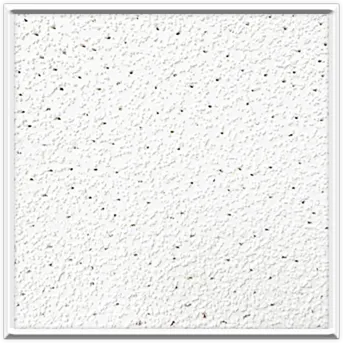Nov . 05, 2024 05:24 Back to list
t bar suspended ceiling grid
Understanding T-Bar Suspended Ceiling Grid A Comprehensive Guide
T-bar suspended ceiling grids are an essential component in modern architectural design, providing aesthetic and functional benefits to various interior spaces. These grids, also known as drop ceilings, are widely used in commercial and residential buildings. This article will explore the structure, installation process, advantages, and applications of T-bar suspended ceiling grids.
Structure of T-Bar Suspended Ceiling Grid
The T-bar ceiling grid is composed of a series of metal strips primarily made of galvanized steel or aluminum. These strips form a grid-like framework that supports ceiling tiles or panels. The primary components of the grid include the main runners, cross tees, and wall angles. The main runners are long, straight sections that run parallel to the longest wall of the room, typically 12 to 24 feet in length. Cross tees are placed perpendicular to the main runners, creating a grid pattern suitable for supporting ceiling tiles.
The wall angle is a metal strip fixed along the perimeter of the ceiling, serving to hold up the grid system and providing a neat finish at the edges. These components work together to create a sturdy support system that can hold various types of ceiling tiles, from acoustic panels to decorative tiles.
Installation Process
Installing a T-bar suspended ceiling is a straightforward process, often completed by professionals but manageable for skilled DIY enthusiasts. The first step involves measuring the room and marking the desired height of the ceiling. Once the height is determined, a level line is drawn around the perimeter, indicating where the wall angle will be installed.
Next, the wall angle is attached to the walls using screws and anchors. After the perimeter is set, the main runners are installed by suspending them from the ceiling with wires or rods. These wires need to be spaced at intervals specified by the manufacturer, often every four feet, to ensure stability.
Once the main runners are in place, the cross tees are inserted into the main runners, forming the grid structure. The final step involves laying the ceiling tiles into the grid, which may vary in size depending on the design preference. Generally, standard tiles come in either 2x2 or 2x4 dimensions.
Advantages of T-Bar Suspended Ceiling Grids
There are numerous advantages to installing T-bar suspended ceiling grids
t bar suspended ceiling grid

1. Aesthetic Flexibility T-bar systems allow for diverse design options. Users can choose from a variety of tiles, incorporating different styles, textures, and colors to fit the overall decor of the room.
2. Acoustic Benefits Many ceiling tiles designed for T-bar systems are specifically engineered to absorb sound, making them ideal for offices and other commercial spaces where noise control is a priority.
3. Access to Infrastructure One of the most significant benefits of suspended ceilings is easy access to plumbing, electrical systems, and HVAC ducts. The grid allows for quick removal and replacement of tiles when maintenance is required.
4. Concealing Flaws T-bar grids can effectively hide imperfections in the ceiling, such as wiring, pipes, and ductwork. This can provide a cleaner and more polished look to interiors.
5. Energy Efficiency Insulated ceiling tiles can be used in the T-bar system to enhance energy efficiency by reducing heating and cooling costs.
Applications of T-Bar Suspended Ceiling Grids
T-bar suspended ceilings are versatile and can be utilized in various settings. Common applications include
- Commercial Buildings Offices, schools, hospitals, and retail spaces benefit greatly from T-bar ceilings due to their acoustic properties and aesthetic options.
- Residential Spaces Homeowners often install suspended ceilings in basements, kitchens, and bathrooms to enhance design and improve sound insulation.
- Industrial Settings Some factories and warehouses utilize suspended ceilings for practical purposes, such as concealing overhead infrastructure while maintaining accessibility.
In conclusion, T-bar suspended ceiling grids offer a blend of practicality and design flexibility that makes them a popular choice for various types of buildings. Their ability to integrate acoustical properties, aesthetic appeal, and functional accessibility ensures that they remain a staple in interior construction and design. Whether for commercial or residential use, understanding the benefits and installation of T-bar systems can significantly enhance the quality and usefulness of any space.
-
Durable Ceiling T Grid Systems | Easy InstallationNewsAug.29,2025
-
PVC Gypsum Ceiling: Durable, Laminated Tiles for Modern SpacesNewsAug.28,2025
-
Pvc Gypsum Ceiling Is DurableNewsAug.21,2025
-
Mineral Fiber Board Is DurableNewsAug.21,2025
-
Ceiling Tile Clip Reusable DesignNewsAug.21,2025
-
Ceiling T Grid Modular DesignNewsAug.21,2025







